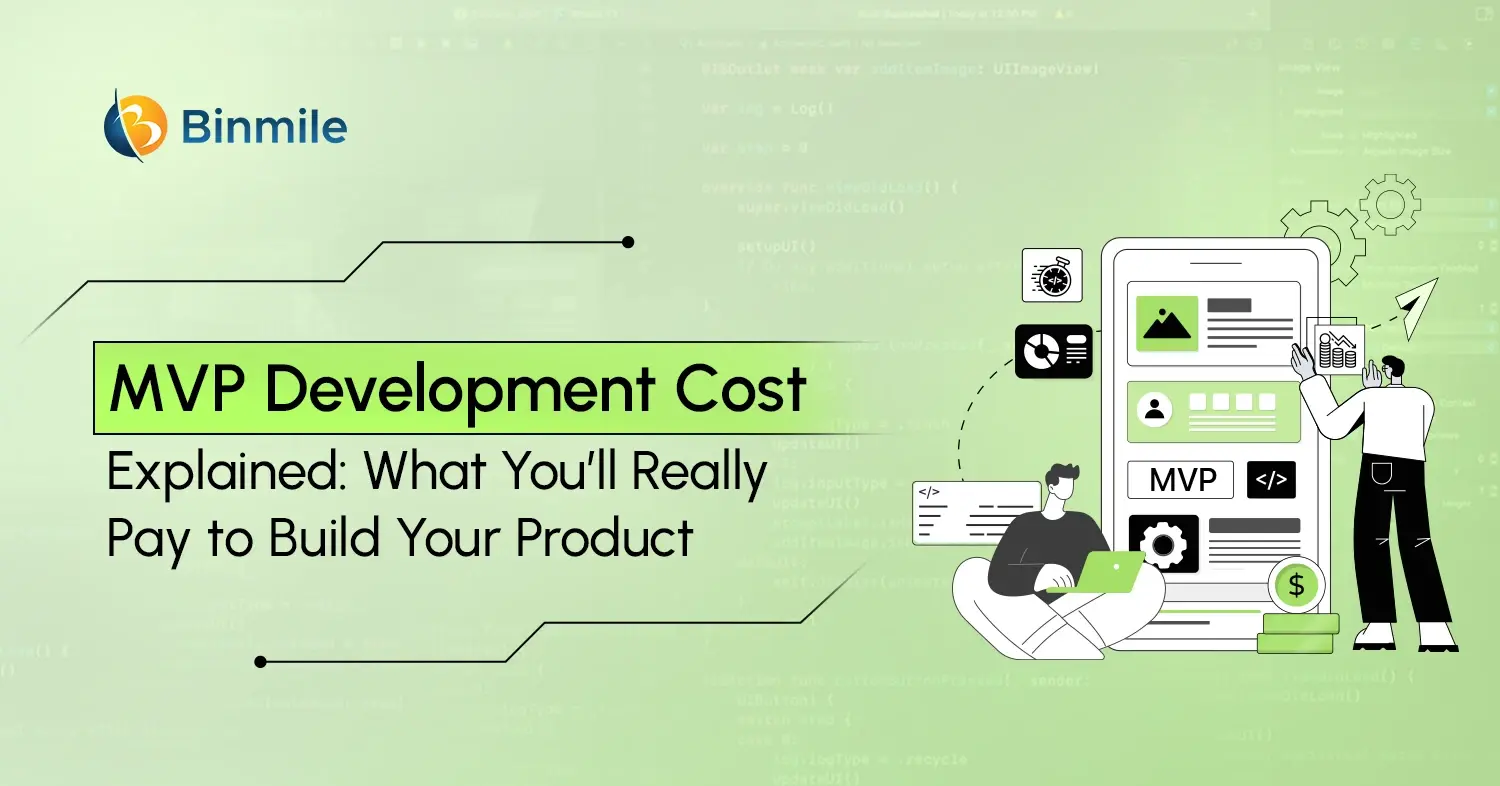- applications of the cost leadership
- applications of the differentiation strategy
- benefits of differentiation strategy
- benefits of strategy cost leadership
- cost leadership and product differentiation
- Cost Leadership vs Differentiation
- cost leadership vs product differentiation
- Differences Between Cost Leadership and Differentiation
- Tips to Pick the Best Business Strategy
- what is cost leadership strategy
- what is differentiation strategy
- when to choose cost leadership strategy
- when to choose differentiation in business strategy
For every business to build sustainable growth, stay competitive, and deliver high-quality products, it requires more than just heavy investment or a robust tech stack. It demands strategic clarity, but more than that, a deep understanding of customer value. Failing to align these with the right competitive advantage and your core strengths results in becoming directionless, misallocating resources, and diminishing long-term viability in an increasingly competitive market. Therefore, businesses often employ different strategies, such as Cost Leadership vs Differentiation, among others. The former focuses on offering the lowest prices at scale, while the latter strives to win loyalty by providing something no other competitor can.
So, do you win on price or beat on value, at a time when margins are thin and customer expectations are sky-high? Between differentiation and cost leadership, which strategy is best for your organization? More importantly, how do you decide? Fret not, we’ve got you covered! In this blog, we’ll dive into the strategy of cost leadership and product differentiation, covering their key elements and benefits. In addition, we’ll also discuss a few tips to help you decide the right strategy for your business.
What is a Cost Leadership Strategy?
It’s a strategy that businesses often implement to become the category leader in terms of low pricing, while maintaining acceptable quality levels. In this strategy of cost leadership, businesses typically aim to offer products or services at a lower price than their competitors, thereby attracting price-sensitive customers and expanding their market share.

Key Benefits of the Strategy of Cost Leadership
- Increased Market Share: By offering lower prices, companies attract more price-sensitive customers, expanding their market presence.
- High Entry Barriers for Competitors: Efficient operations and scale advantages make it tough for new entrants to compete on cost.
- Stable Profit Margins: Cost control cushions the impact of price wars or economic downturns, maintaining profitability.
- Customer Loyalty through Value: Affordable pricing lowers total cost of ownership, boosting value perception and repeat business.
- Greater Bargaining Power: Low-cost structures strengthen a firm’s position in supplier and buyer negotiations.
What is a Differentiation Strategy?
Businesses employ this approach to differentiate themselves from the competition. They do so by focusing on offering products or services that are perceived as unique or superior in ways that matter to customers. Rather than competing on price, the emphasis is on features, quality, brand, innovation, or enhancing the customer experience with AI, which sets the offering apart.

Key Benefits of Differentiation Strategy
- Wider Customer Reach: Lower prices attract a broader segment, especially price-sensitive buyers who prioritize affordability.
- A More Potent Competitive Edge: With optimized costs, organizations can undercut rivals while maintaining healthy margins.
- Improved Resilience: Efficient operations protect against market volatility, ensuring stability in lean times.
- Resource Reinvestment: Savings from cost efficiencies can be redirected into expansion or for other digital transformation services.
- Sustainable Growth: Scaling becomes easier when low-cost operations consistently generate steady profits.
What are the Differences Between Cost Leadership and Differentiation?
| Factors | Cost Leadership | Differentiation |
|---|---|---|
| Primary Focus | Cost reduction | Unique value |
| Market Strategy | Mass market | Targeted or mass |
| Customer Loyalty | Low | High |
| Profit Margin | Low per product | High per product |
| Investment | Efficiency, scale | Innovation, branding |
| Advantage Source | Cost structure | Product uniqueness |
| Risk | Price wars, imitation | Imitation, changing tastes |
1: Primary Focus
- The strategy of cost leadership focuses on minimizing operational and production costs to deliver the lowest-priced products or services.
- Differentiation in business strategy, in contrast, focuses on developing unique attributes that distinguish a product or service from its competitors in the market.
2: Value Creation Mechanism
- In cost leadership, value is created through operational efficiency, streamlined product development processes, and standardization, including in product design, which prioritizes function over customization.
- For differentiation, value stems from design-led development, breakthrough features, and distinctive customer experiences that justify a premium price.
3: Target Market
- This strategy of cost leadership targets broad market segments where customers are highly price-sensitive.
- Differentiation targets customers who are less concerned with price and more interested in quality, uniqueness, or brand identity.
4: Profit Drivers
- Profit in cost leadership comes from high sales volume, operational scale, and low costs. This helps them in maintaining competitive pricing while still preserving healthy profit margins.
- Adopting differentiation in business strategy means profits are driven by premium pricing, substantial brand equity, and customer willingness to pay more for unique value.
5: Customer Loyalty
- The cost leadership strategy often results in weaker customer loyalty, as customers may switch brands for lower prices.
- Differentiation in business strategy can foster strong loyalty, as customers become attached to the product’s unique attributes or emotional value.
6: Investment Focus
- Cost leaders invest primarily in efficiency technologies, supply chain optimization, and cost-reduction methods.
- Differentiation in business strategy involves investing in research and development, marketing, design, and customer experience to enhance uniqueness continually.
7: Risk Factors
- Cost leaders face risks such as being undercut by competitors with even lower costs or compromised quality.
- Differentiators risk being copied by competitors or failing to justify their premium in the eyes of consumers.
When to Choose a Cost Leadership Strategy
- Customers prioritize affordability over unique features, as seen in quick-commerce companies that offer consumer goods.
- Offerings are largely undifferentiated, making price the key decision factor (e.g., generic software tools).
- You can leverage economies of scale to significantly reduce per-unit costs.
- You can minimize overheads and optimize procurement and robust logistics management services.
- Competing primarily on price requires a low-cost base to remain profitable.
When to Choose Differentiation in Business Strategy
- Buyers are willing to pay more for premium quality, innovation, or exclusivity.
- Innovation drives success, as seen in tech, fashion, and FinTech development services.
- Standing out with unique features or branding is essential to avoid price-based competition.
- You aim to build long-term customer loyalty through emotional or aspirational appeal.
- Tailored solutions or exceptional service sets you apart (e.g., IT, enterprise apps, or tools).
How to Choose Between Cost Leadership and Differentiation: 5 Tips for Business Success
The need to choose between cost leadership and differentiation strategies is crucial, as it determines your competitive advantage as a business. We’re discussing five valuable tips to help you choose the right sustainable growth strategy.

1. Understand Your Target Market
Get to know the main priorities of your customers, are they inclined to affordability or unique experiences? A price-sensitive audience aligns well with a cost leadership strategy, whereas customers who prefer specialized features, quality, or brand identity tend to favor a differentiation in business strategy.
2. Assess Your Operating Strengths
Evaluate your internal capabilities and core strengths. Is your business capable of operating efficiently and at scale after offering low prices? Or are you innovative, branded, and can develop exceptional value to warrant premium prices?
3. Align to Long-Term Business Objectives
Whatever strategy you choose, it must support your broader mission. If your goal is to capture the market rapidly or deliver products quickly with an MVP, pursuing a cost leadership strategy may be a wise decision. If you want to create brand loyalty or emerge as a niche leader, adopting differentiation in business strategy is more effective.
4. Competitor Positioning Analysis
Research your competitors to find and bridge strategic gaps. If the majority of players focus on price, differentiation can help you stand out. Conversely, in a highly specialized market, adopting a cost leadership strategy can disrupt when you offer a similar value at a lower cost.
5. Evaluate the Scalability and Sustainability
Don’t just think about a successful launch, but also focus on whether you can be competitive and maintain your margins over the years. As cost leadership requires efficiency at all times, and differentiation demands continuous innovation. Ultimately, opt for a business strategy consulting that your business can sustain as it grows and evolves.
Closing Remarks on Cost Leadership vs Differentiation
To run a sustainably growing and relevant business is possible when business leaders go beyond selecting one competitive strategy. Only those businesses achieve long-term success when they align with their capabilities, market realities, and long-term goals to build a defensible advantage. So, what matters most is consistency, execution, and the ability to evolve without losing focus. Therefore, in the debate of which is better for your business: cost leadership vs differentiation, the answer is: there’s no one-size-fits-all strategy. The best strategy between cost differentiation vs leadership is whichever amplifies your strengths, resonates with your market, and positions you for sustainable growth.
Hopefully, this blog has provided an understanding of the choices between becoming a cost leader and a differentiator. In this blog, we discussed in detail what these strategies are, their benefits, and also shared some real-world applications of the cost leadership and differentiation strategy. To navigate this strategic choice effectively, partnering with a digital transformation services company can help enhance your operational capabilities, technology investments, and customer value proposition. After all, with the right expertise, businesses can confidently map their competitive strategy to long-term success without compromising on cost or quality!
Ready to explore how our software product strategy consulting can give your business a competitive edge? Schedule your free strategy call today!
Frequently Asked Questions
Neither strategy is universally “better.” The right choice depends on your organization’s goals, target market, and resources. Cost leadership works best in price-sensitive markets where efficiency and scale matter. Product differentiation is more effective when customers value uniqueness, innovation, or brand loyalty. Many successful businesses even combine aspects of both to create a hybrid strategy
A cost leadership business strategy aims to minimize production, operational, and distribution costs to offer products at lower prices than competitors. Companies achieve this through economies of scale, process optimization, efficient supply chains, and strict cost controls. Examples include large retailers and budget airlines that dominate markets by offering affordability without necessarily focusing on uniqueness.
The main advantage of cost leadership is its ability to attract price-sensitive customers and maintain competitiveness in markets with little product variety. It often leads to higher market share, stronger bargaining power, and resilience during economic downturns. However, it requires maintaining cost efficiency without compromising too much on quality
Evaluate your market conditions, customer preferences, and internal strengths. If your industry is price-driven with little product variation, cost leadership may be the best fit. If customers prioritize innovation, quality, or brand identity, differentiation is more suitable. A careful analysis of competitors and your company’s capabilities will guide the right decision.









